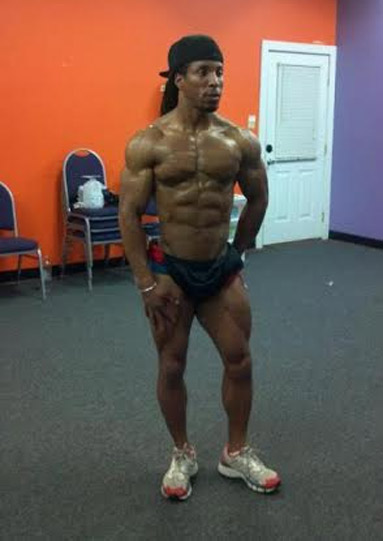If I got a dollar every time someone stopped me at the gym, coming off stage, or even just out and about and asked me the infamous “where do you get your protein?” or “how much protein do you eat?” question, I would be rolling in the gluten-free dough! There are times I want to respond with, “Do I look like I don’t get enough protein!?”, as I simultaneously flash a wide-eyed double bicep pose. Although that may sound like a great idea, I also choose to have patience with people who just don’t know the facts about protein-packed, plant-based foods. In the mainstream fitness world, beef= gains. I don’t fault anyone for following the “herd” mentality since, purely from a physique standpoint, meat works for gaining mass. The propaganda surrounding the support of meat as a main source of “nutrition” is not new to us vegans. Although meat consumption has gone down over the past few years, it is still a scary thing to bodybuilders to eliminate meat and still do what they do.

According to the Journal of Nutrition, the current RDA for protein describes the minimum quantity of protein that should be consumed daily to prevent deficiency is around 0.8g per kg of bodyweight. This statistic is a general daily value for the average American, and we all know that people into fitness and bodybuilding (in general) are not your “average” American. We need more, right? I don’t believe I am alone in wanting to show the world that plant built muscle can grow. So, let’s take a closer look at how much protein is really needed to gain muscle mass on a vegan meal plan. (Notice I did not say “diet”; it should be a lifestyle, because you are not “dead yet” [diet].) In order to gain more muscle or to keep the muscle you have from withering away, I believe the best way to consume protein is in moderate amounts of high quality protein 3-5 times a day to provide a more effective means of stimulating 24-hour muscle protein synthesis, versus the practice of less in the morning and more at night. So, roughly 30g at breakfast and 20g for the last meal of the day.
What usually separates animal protein from plant protein is the amino acid profile, and yes, there are sources of complete amino acid profiles within the plant world. Rice and beans, when combined, create a great complete protein that’s amazing to the taste buds and great for the colon (fiber). Quinoa, another complete protein, is a grain (well, technically, a seed) that is prepared in very much the same way as rice. Just 100 calories of broccoli has a comparable amount of protein when compared to red meat at the same caloric amount. Now that may be a “boatload” of broccoli, but at least you will be fully satisfied (mentally and physically) vs. having to eat more just to fill up. Some of my favorite and most common ways to get in protein are: beans, almonds, quinoa, tempeh, tofu, seitan, spinach, kale, broccoli, collards, and any other plant I get my hands on. It may be challenging to consume all the whole foods needed to meet the moderate amounts of protein per meal initially, but consistency will pay off when coupled with intense weight training. I would love to hear from you or help you reach your body sculpting goals. I can be reached at Facebook: ThaVeganDread, Instagram: ThaVeganDread or my website www.thavegandread.com. Let’s Get It (that plant protein, of course)!!!!!!



Recommended Comments
There are no comments to display.